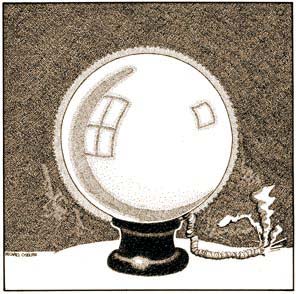
WASHINGTON - A divided U.S. Supreme Court grappled with the meaning of the "one person, one vote" principle, hearing arguments in a case that might transform the way legislative maps are drawn and reduce Hispanic clout in elections.
The court is weighing whether states and local governments can continue their decades-old practice of using total population as the basis for drawing equal-sized voting districts. Two Texas voters say the measure should instead be eligible voters, an approach that would reduce representation for areas with lots of children and non-citizens.
The hour-long session didn't give a clear indication how the court will rule. The justice who often serves as the court's pivot, Anthony Kennedy, suggested he was still wrestling with the central issues.
At one point, Kennedy sought out a middle ground, asking a Texas state lawyer, "Why can't you use both?" Kennedy quickly backed away from that suggestion after the Texas state lawyer said it would force map-drawers to stop using traditional factors, such as the goal of compact districts.
The case touches on a fundamental question about representative democracy, asking whether lawmakers serve on behalf of everyone in their district or only those eligible to cast ballots. The issue has taken on greater importance as the share of non-citizens in the U.S. has grown. It has risen from 2 percent in 1970 to 7 percent in 2013, according to the nonpartisan Migration Policy Institute in Washington.
The Texas case directly affects only state redistricting, though it has the potential to influence congressional maps as well. The 14th Amendment requires the 435 U.S. House seats to be apportioned among the states on the basis of total population, but it doesn't specify what rules apply to line-drawing within the states.
The clash was one of two voting cases before the court Tuesday. The justices also heard contentions that an independent commission in Arizona violated the Constitution by overpopulating Republican-leaning state legislative districts to reduce the power of those voters.
The independent commission that drew the Arizona map says it drew the districts as it did in large part to comply with the Voting Rights Act, which protects minority voters.
Both cases stem from the Supreme Court's landmark 1964 Reynolds v. Sims ruling, which established the "one person, one vote" standard and said the Constitution's equal protection clause requires states to make their voting districts roughly the same size. The ruling voided maps across the country that had disproportionately allocated legislative seats to heavily white rural areas.
In the Texas case, a Republican county chairwoman and another voter are trying to use that principle to force changes in the state Senate map. Sue Evenwel and Edward Pfenninger claim they are underrepresented compared with voters in other districts.
Civil-rights groups say a shift away from total population would be a blow to Hispanic communities, which tend to have more children and more non-citizens than other areas.
Their argument struck a chord with the court's liberal wing. Several justices said they read the Constitution as being at least as concerned with equalizing representation as equalizing voting power.
"There's a voting interest, but there's also a representation interest," said Justice Sonia Sotomayor, the court's lone Hispanic.
Chief Justice John Roberts suggested he viewed eligible voters as a legitimate standard. He said the Justice Department routinely uses eligible voters as a barometer when it enforces the Voting Rights Act, which protects racial minorities.
"It's called 'one person, one vote,'" Roberts said. "That seems to be designed to protect voters."
William Consovoy, the lawyer representing Evenwel and Pfenninger, told the justices that some districts have almost 50 percent more eligible voters than others.
"No decision of this court has ever sustained vote dilution of that magnitude under a one-person, one-vote case," he said.
Kennedy hinted at sympathy toward that argument. He asked whether the state couldn't "at least give some consideration to this disparity that you have among voters."
Texas officials are defending their map, though they say the Constitution lets states and local governments use different measures and doesn't require total population.
"There are multiple legitimate bases here on which a state can redistrict," Texas Solicitor General Scott Keller argued. "Electoral equality is one of them. Representational equality is another."
The Obama administration says the court should uphold the Texas map and its use of total population, without suggesting that officials might have other options. Deputy Solicitor General Ian Gershengorn told the justices a broad ruling could have sweeping consequences.
"What we're talking about is not just 50 states but thousands of jurisdictions around the country, local jurisdictions, none of whom use voter population as a measure for redistricting," he said.



 Contact The Editor
Contact The Editor
 Articles By This Author
Articles By This Author